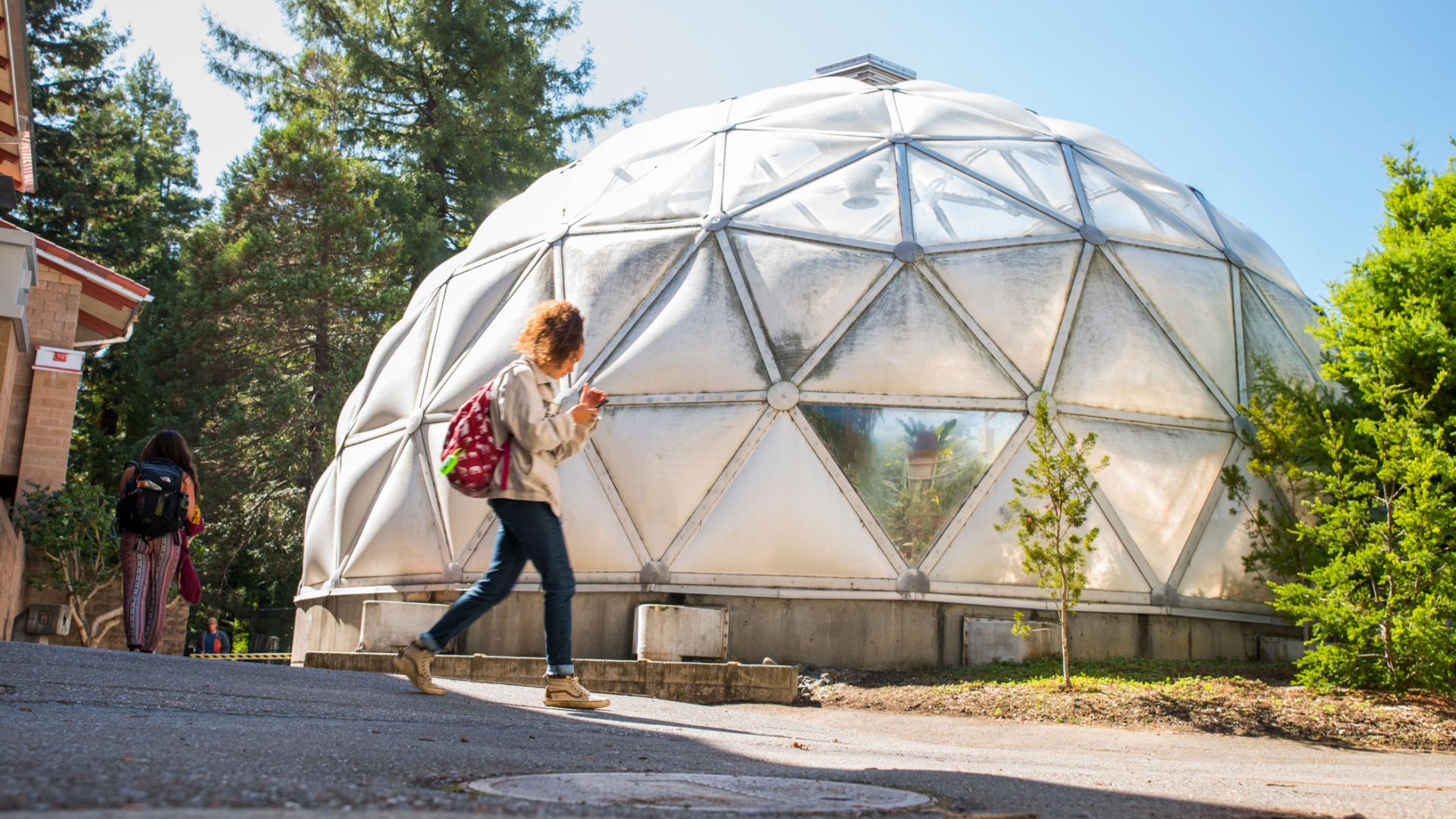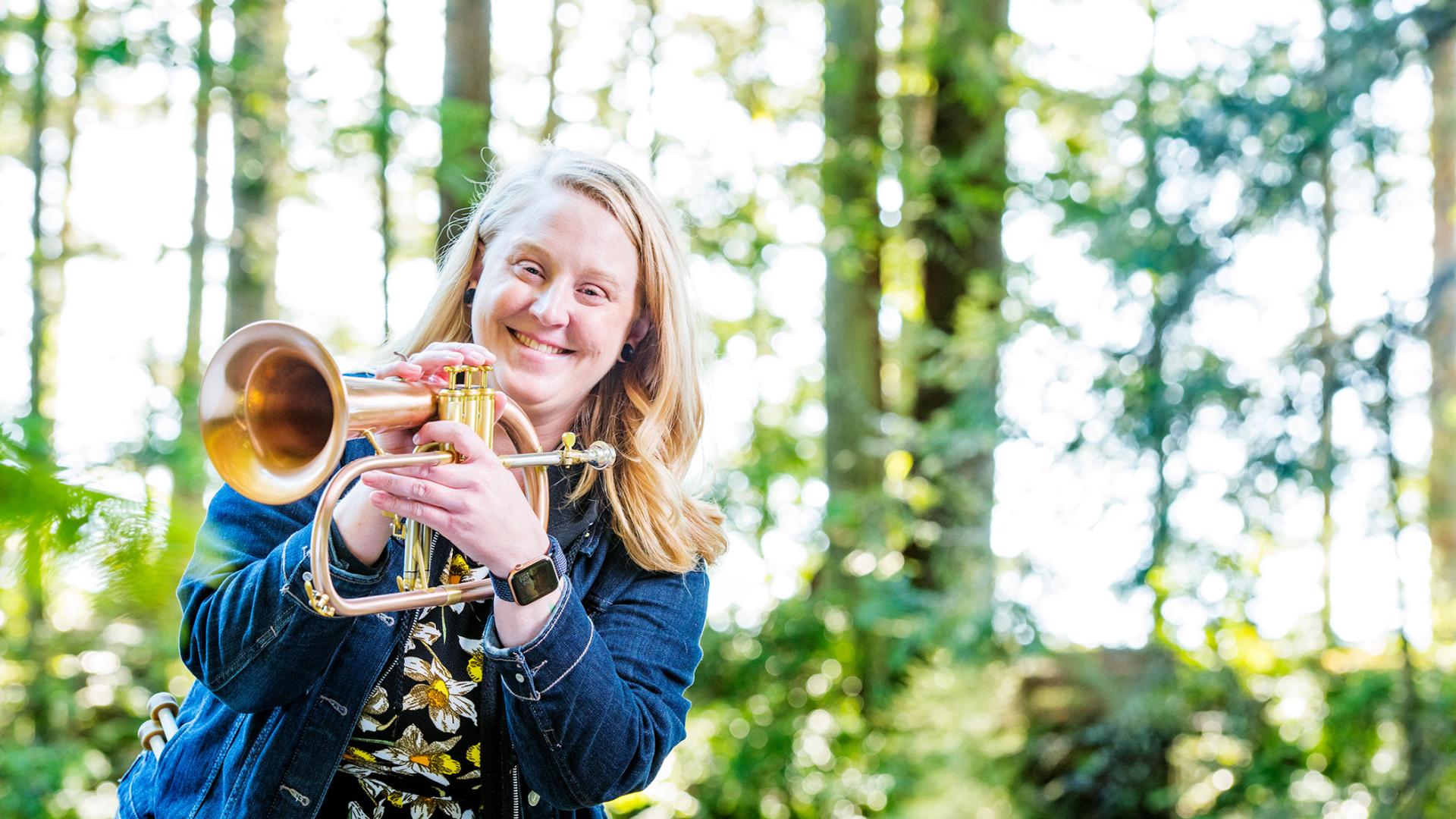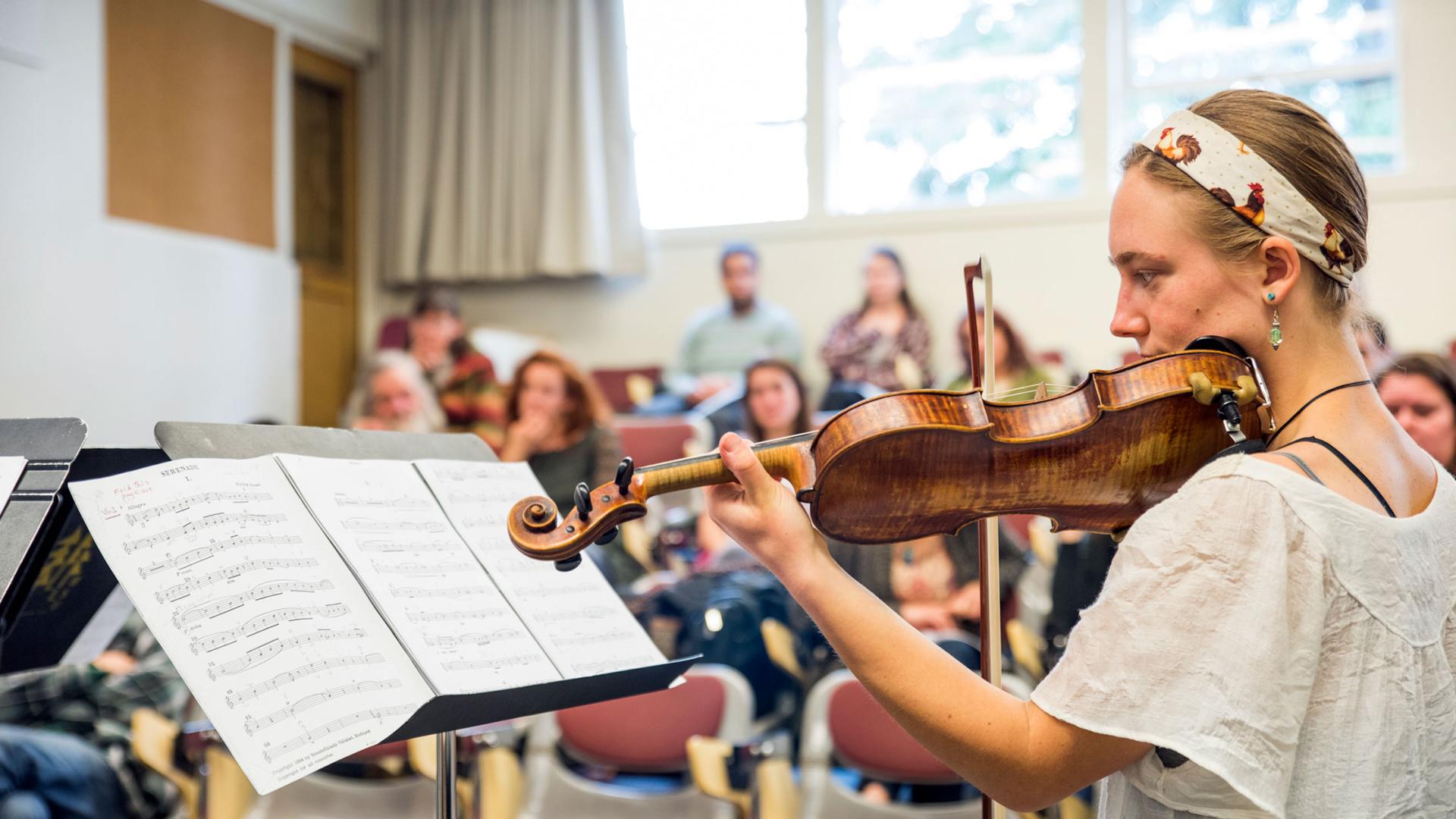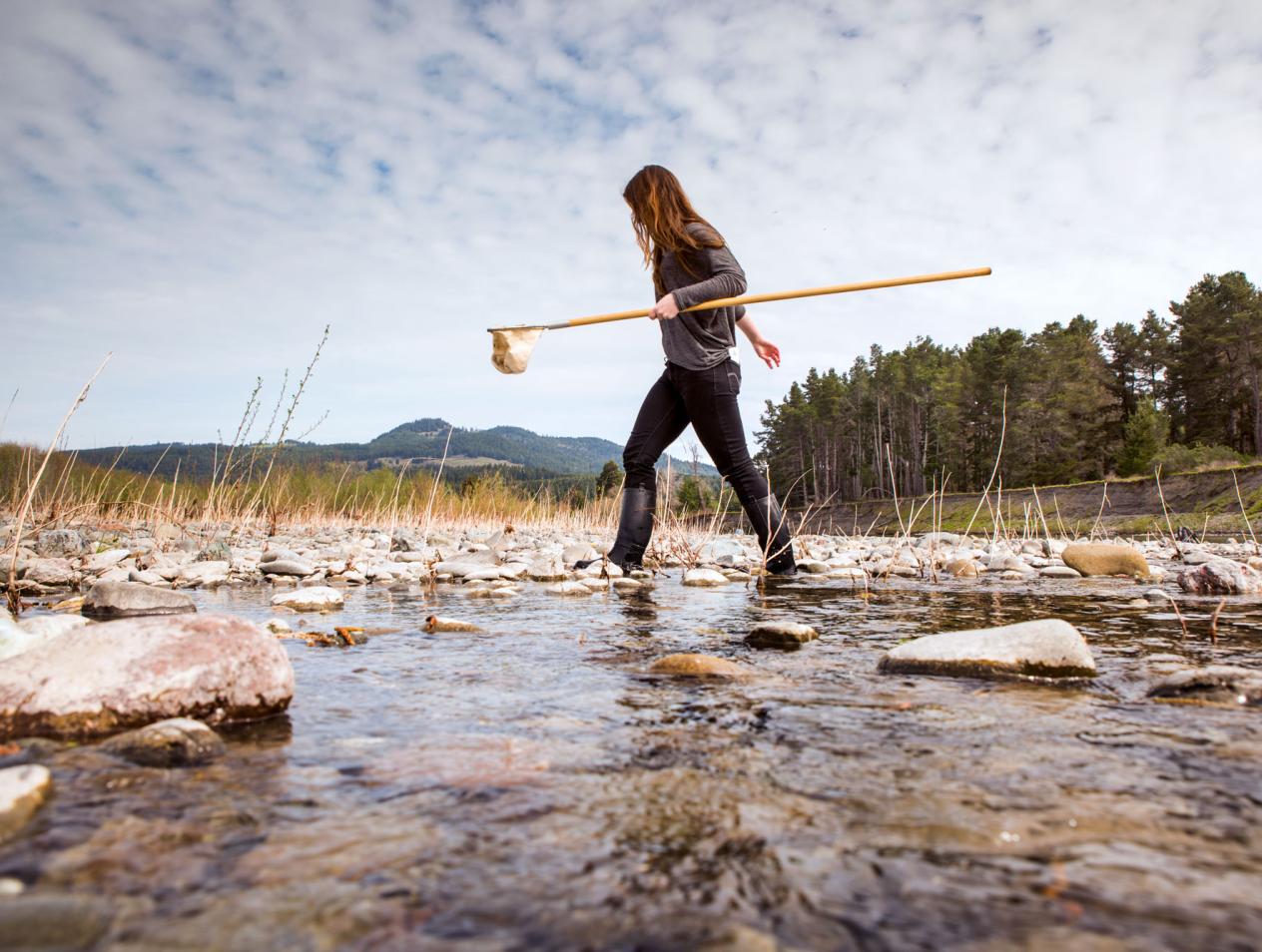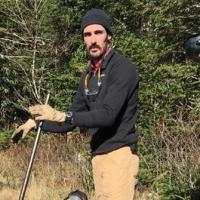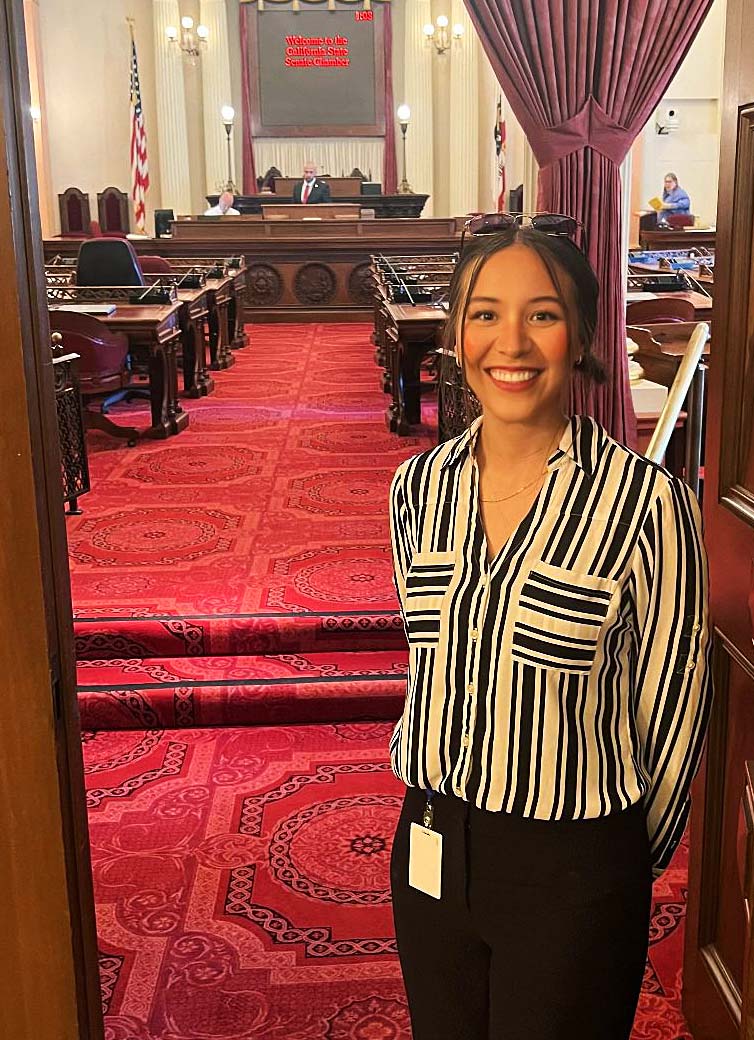Breadcrumb
Department of Environmental Science & Management
Science-based knowledge and practical solutions to our environmental challenges are at the heart of the Environmental Science & Management (ESM) program. With the support of faculty and opportunities to do field research in Cal Poly Humboldt’s ecologically diverse region, you’ll explore the relationships between people and the natural world.
Degree Options
Bachelors Degree
Environmental Science & Management, B.S.
Our Environmental Science & Management (ESM) Bachelor of Science degree program explores the interactions between the biological and physical world, human institutions, and human behavior. You’ll choose one of five concentrations that will allow you to discover the intricate balance of people and nature through multiple disciplines.
Masters Degree
Natural Resources, M.S.
The program includes options in Environmental Science & Management (ESM), Forestry, Watershed and Wildland Sciences (FWWS), Wildlife, and Fisheries, and provides graduate training in traditional disciplines, as well as flexibility for training in the interdisciplinary aspects of natural resources.
Our graduate programs provide the knowledge and experience necessary to address scientific problems and to carry out scientific investigations including design, implementation, and evaluation of research in specific areas of study.
Environmental Science & Management isn’t a discipline you learn by simply reading a textbook. You learn through practical experience–a given at Cal Poly Humboldt.
Where You'll Learn
Surrounded by ancient redwoods, and near the Pacific Ocean, pristine rivers, mountains, and marshes, Humboldt has the perfect environment for field research.
Many lab sessions are held in nearby natural habitats, such as the Arcata Community Forest, Arcata Marsh & Wildlife Sanctuary, and Redwood National and State Parks. There are also day-long or multi-day field trips to places like the Trinity River, Crater Lake National Park, Trinity Alps Wilderness, and the Mattole River watershed.
There are plenty of opportunities on campus, too. For instance, you can volunteer at the Campus Center for Appropriate Technology (CCAT), Humboldt’s a live-in eco-demonstration house. It’s run by students who demonstrate waste-reduction, energy efficiency, and other ways of living sustainability.
In your senior year, put theory, research, and field experience to the test with the practicum (capstone course), where you’ll apply everything you’ve learned to real-world environmental issues.

Personal Attention
Whether outdoors or in the classroom, our professors are passionate about teaching and mentoring. Professors like Alison O’Dowd make sure to involve undergraduates in their own research. Her students have examined the complex interplay between dams and other diversions, seasonal flow, and aquatic invertebrate community dynamics on the Eel River.
And thanks to small class sizes, they can work with you one-on-one to answer questions, providing advice and any help you may need to thrive at Humboldt.

Study Abroad
In addition to the wide array of courses available at Cal Poly Humboldt there are also opportunities to experience hands-on learning through study abroad and field programs, such as the Earth Education International (EEI). An experiential learning organization in Costa Rica, EEI provides interdisciplinary courses in sustainability, environmental studies and social responsibility. The program works in partnership with global educational institutions to support and promote sustainable initiatives locally. Learn more about the Deep Ecology and Sustainable Living short course offered in the summer and winter and the condensed spring semester program in Sustainable Global Stewardship.
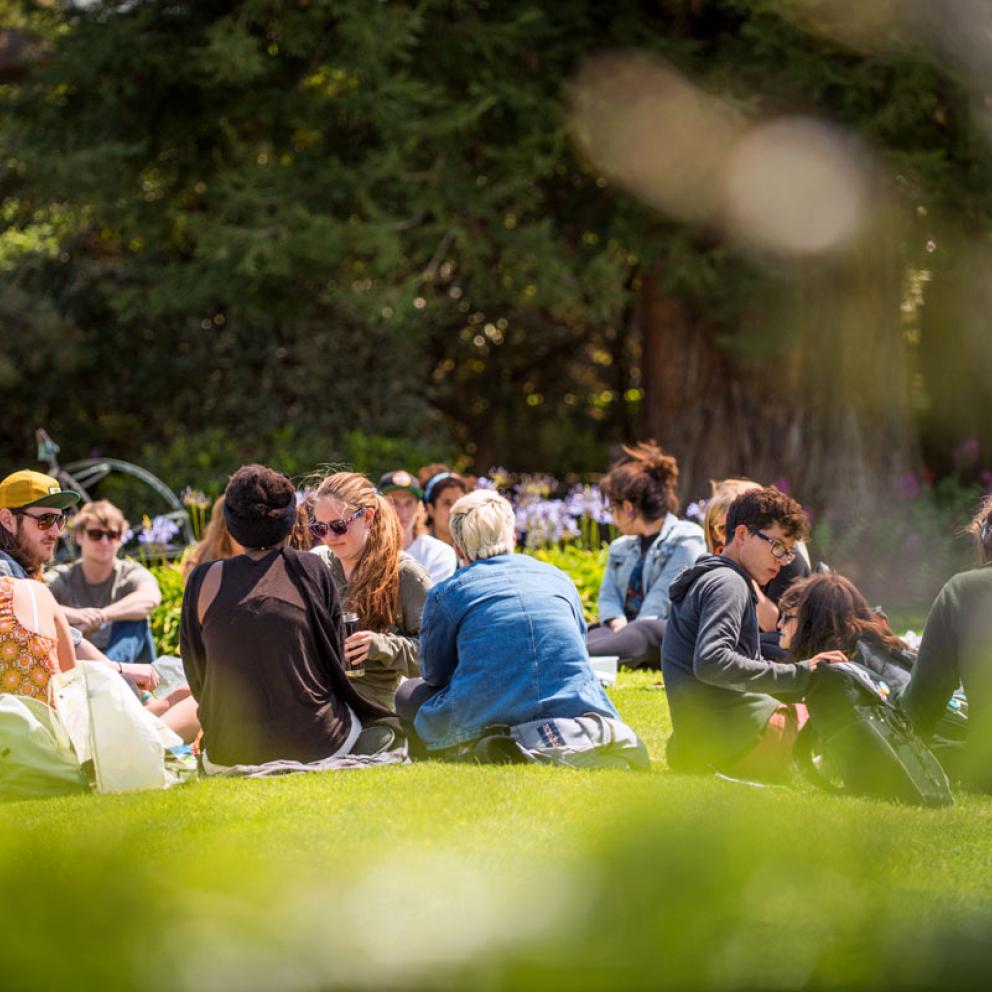

Place-based Learning Community
As an ESM major, you will participate in a free science program called the Klamath Connection. For one year, freshmen in specific science majors (including ESM) will explore the relationships between science, traditional ecological knowledge, the environment, and Native American communities all through the lens of California’s second largest river, the Klamath River. You’ll gain confidence and be more prepared for your future studies at Humboldt. You’ll also find the support to navigate college life, all while making new friends.
Career Options
ESM graduates are known throughout the country for being highly prepared for the job market and have gone on to pursue a variety of careers.
Here are a few examples of possible career fields.
- Coastal Program Analyst
- Ecologist
- Energy Analyst
- Environmental Analyst
- Environmental Consultant
- Environmental Scientist
- Geospatial Analyst
- Habitat Restoration Specialist
- Natural Resource Specialist
- Park Naturalist or Ranger
- Project Planning:
- City/County Planner
- Environmental Planner
- Recreational Planner
Featured Alumni
Monica Sheffer and Kerry Byrne
Environmental Science & Management
Graduate student Jesse Laine, with Drs. Monica Sheffer and Kerry Byrne, are investigating how grassland restoration shapes insect populations in Northern California’s coastal prairies. Insects are declining globally due to threats like climate change and habitat loss, with huge consequences for conservation and agriculture since they provide essential ecosystem services. Yet their biodiversity remains poorly understood. This project will help fill that knowledge gap while informing grassland conservation, agriculture, and management. It also builds on Laine and Byrne’s ongoing research into how prairie restoration affects plants, soil health, and forage production.
This project is funded by the CSU Agricultural Research Institute.
Sean Stewart, Kerry Byrne
Environmental Science & Management
Sean Stewart has published the first chapter of his thesis in the journal Restoration Ecology. For this research, Stewart and his M.S. advisor, Dr. Kerry Byrne, compared long-term demographic data and survival of transplanted (9 year) and extant (7 years) individuals of Applegate's milkvetch within the same population. Applegate's milkvetch is a Federally Endangered plant species found only near or within the city limits of Klamath Falls, Oregon. The results of this study suggest that population reinforcement can be a successful conservation tool for Applegate's milkvetch under the right conditions and the study may be used as a tool to inform conservation strategies for other imperiled herbaceous perennial plant species.
Stewart S. M. and K. M. Byrne. 2025. Is reinforcement a viable conservation strategy for the endangered perennial herb, Astragalus applegatei? Restoration Ecology 33: e14314. https://doi.org/10.1111/rec.14314
Sean returned to Humboldt State as a non-traditional student and earned his B.S. and M.S. in the ESM Department. He was the 2021 recipient of the McCrone graduate student fellowship award.
Kerry Byrne (ESM), Justin Luong (FFRM)
Environmental Science & Management
Drs. Kerry Byrne (ESM) and Justin Luong co-led a manuscript published in the journal Ecosphere. The study describes the results of a 4-year drought experiment in southern Oregon on two understudied sagebrush species. They found that severe drought had divergent effects on two adjacent plant communities with differing dominant sagebrush species (low sagebrush and silver sagebrush).
Byrne, K.M.*, J. C. Luong*, and K. Kaczynski. 2025. Divergent drought responses in two cold desert shrublands. Ecosphere 16(3): e70211. https://doi.org/10.1002/ecs2.70211
*co-first authors


